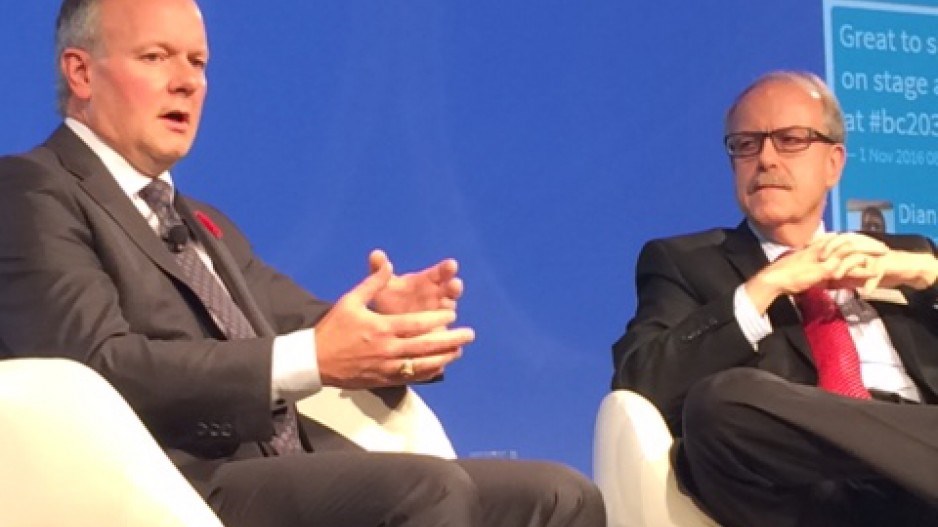Bank of Canada Governor Stephen Poloz is banking on the “low probability” that Canada will suffer a major economic shock and is holding the central bank’s inflation targets for another five years.
And that means continued low nominal interest rates – possibly even negative interest rates, if that unexpected shock ever does come.
The Bank of Canada recently renewed its inflation targets for another five years, which aim to stick with an average inflation rate of 2%.
At a keynote speech at the BC Business Council’s BC Business Summit on November 1, Poloz explained to a sold-out crowd of business people why the Bank of Canada thinks its inflation targets are an effective tool that does not need recalibration.
“Canadian businesses and households have reaped the rewards of reduced uncertainty, helping them make spending and investment decisions with more confidence,” Poloz said.
Harkening back to the 1970s and 1980s, when inflation rates swung wildly – as high as 12% – and created uncertainty for businesses and consumers, Poloz said punishingly high interest rates were used as a last resort in the 1970s to curb inflation – something that pushed mortgage rates into the 20% range.
Twenty-five years ago, Canada embraced inflation targeting, which was experimental at the time and has since proven an effective way of providing more stability.
Canada’s use of inflation targets and a floating exchange rate gives Canada some flexibility to respond to economic shocks, like the 2008-2009 recession, Poloz said.
“We could act aggressively during the global financial crisis, for example, because inflation expectations were so well anchored,” he said.
Canada was among the first to use inflation targeting, but now 64% of the world’s economy uses some form of inflation targeting, Poloz said.
But sticking with those targets has meant sustained low interest rates, which are becoming less and less effective in stimulating economic growth.
Poloz said the Bank of Canada has flirted with the idea of raising its inflation target, which would mean higher nominal interest rates. That would give the central bank more room to manoeuvre in economic crises, because it could lower rates to stimulate spending.
But Poloz said higher interest rates would amount to “a higher inflation tax on the economy.”
“I think of this as paying dearly, every day, for insurance against the low probability risk that another very large macroeconomic shock could occur in the future,” he said.
He said new unconventional monetary policy tools – negative interest rates, for example – “give us more room to manoeuvre than previously believed” should they be needed.
Jock Finlayson, chief policy officer for the BCBC, said the central bank’s five-year renewal of its inflation targets is the right thing for the Canadian economy.
“What he’s saying is we’ve got a framework that’s worked in Canada,” Finlayson told Business in Vancouver. “We’ve got inflation expectations anchored around 2%. We want to keep it there.
“I think staying the course is the right move.”




